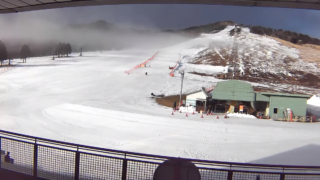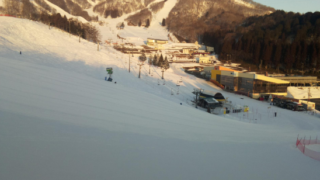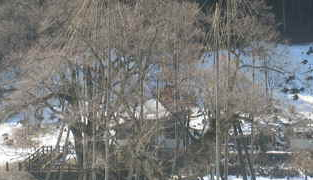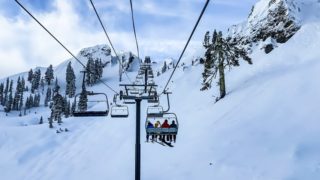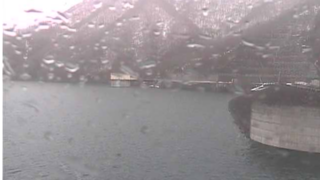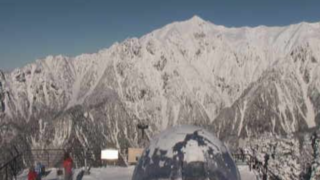Gifu Prefecture Live Cameras
Gifu Prefecture Mino (Gifu)
Gifu City | Ogaki City | Tajimi City | Seki City | Nakatsugawa City | Mino City | Mizunami City | Hashima City | Ena City | Minokamo City | Toki City | Kakamigahara City | Kani City | Yamagata City | Mizuho City | Motosu City | Gujo City | Kaizu City | Ginan Town | Kasamatsu Town | Yoro Town | Tarui Town | Sekigahara Town | Godo town | Wanouchi Town | Anpachi Town | Ibigawa Town | Ono Town | Ikeda Town | Kitagata Town | Sakahogi Town | Tomika Town | Kawabe Town | Hichiso Town | Yaotsu Town | Shirakawa Town | Higashishirakawa Village | Mitake Tow
Gifu Prefecture Hida (Takayama)
Takayama City | Hida City | Gero City | Shirakawa Village
All over the prefecture
- Kinkazan | Gifu Kinkazan Ropeway Summit Station, 3 Keyakidani, Gifu City, Gifu Prefecture 500-0000
- Neodani Usuzumi Zakura | Usuzumizakura, Neoitasho Imamura, Motosu City, Gifu Prefecture, 501-1525 | Motosu City Office
- Gujo Hachiman Castle | Otoya, 2-8-42 Ono, Yahata-cho, Gujo City, Gifu Prefecture 501-4221 | Gujo.com
- Kamagatani | Kamagatani Sakura Kaikan, Fujishiro, Ikeda-cho, Ibi-gun, Gifu Prefecture 503-2429 | Ikeda Town Office
- Hidatakayama | Kaji River, Miyagawa, Asaichi-dori, Nakahashi, Jinya-mae | Takayama Printing Co., Ltd. / Hida/Takayama Tourism and Convention Association
- Yarigatake, Minamidake, Dakesawa | Takayama City and Matsumoto City | Yarigatake Sanso Group
- Shinhotaka Ropeway Nishihotakaguchi Station Observation Deck | Shinhotaka Ropeway Nishihotakaguchi Station, 445 Kurio, Nakao, Okuhida Onsengo, Takayama City, Gifu Prefecture 506-1421 | Shinhotaka Ropeway
- Shirakawa-go | Ogimachi Castle Ruins Observation Deck, Ogimachi, Shirakawa Village, Ono District, Gifu Prefecture, 501-5627 | Shirakawa Village Office
- National Highway No. 41 (Hida City / Takayama City / Gero City) | Camera Title: “Gifu Prefecture Hida Area Road Situation Live Camera” Northern Hida, Central Hida, Southern Hida | Management: Takayama National Highway Office
- Mt. Hotaka | From the mountain lodge towards Mt. Hotaka (closed during the off-season) / Mt. Hotaka
- National highways 19 and 21 (around the prefecture) | Camera Titles: “National highways 19 and 21 road conditions live camera” National highway 19: Nakatsugawa Ohashi, 4th ramp, Mukaiyama intersection, Ochiai climbing, Yamaguchi climbing, Yaeibashi intersection, Kurio-dongmon , Roadside Station Shizumo, Shizumo Ohashi, Shizumogawa, Nagashima Information Board, Enayukikan Base, Kamado Shimogiri, Kamado Up, Tsurujo Overpass, Uchizu Tunnel Up, Uchizu Tunnel Down, Fujimi Up, Otowa Intersection, Torakei Ohashi, Higashimachi Intersection , Toki Ohashi, Otomi intersection, Meisei high bridge, National highway No. 21: Kamiedo, Ohba intersection, Kakita intersection, Furuyashiki, Ijiri, Next month intersection, Roadside station Shino Oribe | Management: Tajimi Sabo National Highway Office
- National Highways in Gifu Prefecture | “Gifukoku Navi Road Situation Live Camera” National Highway 21, National Highway 41, National Highway 156, National Highway 158 | Gifu National Highway Office, Chubu Regional Development Bureau, Ministry of Land, Infrastructure, Transport and Tourism Gifu City Akanebe Hongo
- Kiso River / Shonai River | Kiso River Sabo, Shonai River Sabo Live Cameras | Tajimi Sabo National Highway Office
- Kiso River / Nagara River / Ibi River | “Kiso River Upstream Office Jurisdiction Live Camera Video” | Kiso River Upstream River Office
- Etsumi Mountain Range | Etsumi Mountain Range Disaster Prevention Information (Ibi River, Neo River) | Etsumi Sankei Sabo Office
- Nagara River / Ibi River / Kiso River | Ibi River Tado River Confluence, Nagara River Right Bank, Kiso River Left Bank | Kiso River Downstream River Office
- Gifu Prefectural Roads | National highway 21, National highway 41, National highway 156, National highway 158 | Gifu National Highway Office
- National Routes in Gifu Prefecture | National Routes 156 / 158 / 256 / 257 / 303 / 360 / 365 / 417 / 471 / 472 | Road information Road freeze / snow cover information
- Rivers in Gifu Prefecture | “Disaster prevention information for Gifu prefecture rivers” Ibi river, Nagara river, Hida river, Kiso river, Toki river, Miyagawa river | Gifu prefecture soil maintenance department river section
Gifu Prefecture Tourism Information
The prefectural capital of Gifu Prefecture is Gifu City. The prefectural population is about 2.06 million people, and the population of Gifu City is about 420,000 people. There are continuous altitude 3,000m class mountains, Hida Mountains, such as Mt. Norikura, Mt. Okuhotaka and Mt. Ontake in the north, and in the south there are “Kiso Three Rivers”, which refer to Kiso River, Nagara River and Ibi River, in the Nobi Plain. It is said that the name of “Gifu” is derived from the fact that the area was renamed as “Gifu” when Oda Nobunaga dominated the castle of Inabayama in the Warring States period. Oda Nobunaga named Iguchi, the place where the Inabayama Castel existed as the headquarters of “Tenka Fubu”, his policy to unify the nation by military force, “Gifu”, and renamed the castle “Gifu Castle”, following the fact that King Wen of Zhou of China was aimed at the world pacified from Qishan. “Gifu Castle” is located in the mountaintop of Kinkazan at an altitude of 329m, the scenery of Gifu is the best to look at from the fourth floor of the castle tower observatory, and it seems that the figure of Nobunaga who aimed at unification comes to mind. “Shirakawa-go” is the Gassho-style settlements whose main region is Shirakawa Village of Ono-gun. About 1.4 million people of tourists visited yearly and it was registered in the “World Cultural Heritage” in 1995. There are Gassho-style old folk houses of straw thatched roofs, such as Wada house, nationally designated important cultural property of 300-year-old, and 160-year-old Kanda house, and there are tourist facilities such as Myozenji Museum and Gassho-dukuri Minkaen.
Takayama is known as Hida Takayama and Hida Little Kyoto, and is a tourist destination where the streets of the castle town from the Edo period remain. In 2010 Takayama City with a population of about 90,000 people was visited by tourists of about 3.8 million people, including about 180,000 foreign tourists. There are rich tourism resources such as “Takayama Festival”, “Miyagawa morning market” and “Takayama Jinya”, and they became tourist destinations to represent Gifu Prefecture as well as “Shirakawa-go”.
“Norikura-dake (Mt. Norikura)” refers collectively to 23 mountains in total, including Kengamine of Hida Mountains south, Dainichi-dake (Mt. Dainichi), Byobu-dake (Mt. Byobu) and Yakushi-dake (Mt. Yakushi). Kengamine is the altitude of 3026m at the highest peak, but the altitude of the most low mountain among the 23 mountains, Abou-san (Mt. Abou), is 2,220m, and they form a part of steep Hida Mountains and the Northern Alps. “Norikura Skyline” leads from Takayama City to Tatamidaira parking lot of elevation about 2700m, but now it becomes a way of only buses or taxies for a private car regulation.
“Gero Onsen (hot spring)” in Gero City is one of Japan’s three famous hot springs along with Kusatsu Onsen and Arima Onsen, and it is a hot spring of a history of more than a thousand years. It is the prefectural leading tourist hot spring resort visited by guests of about 1 million people annually. There are recommended tourist spots, such as “Gero Onsen Gassho-mura (village)” where Gassho-style houses of Shirakawa-go were reconstructed and “hot water morning market” to sell the local specialty products.
There are some local cuisines such as “Hooba-miso” and “Kurikinton.” “Hooba-miso” is a local cuisine that miso of Takayama is placed on Hooba (park leaves) and green onions, shiitake mushrooms, shavings of dried bonito are baked on the lieaves. “Kurikinton” is a Japanese confectionery of chestnut shape. Boiled or steamed chestnuts are grinded and sugar is added, then they are squeezed in tea cloth and made in the shape of chestnut.

